The appearance of the ear is not something that most people spend a lot of time worrying about. When your ears stick out however, it can become a preoccupation and a source of embarrassment. Choosing a haircut, hat or even whether to go swimming becomes a difficult, ear-centric decision.
Prominent Ears
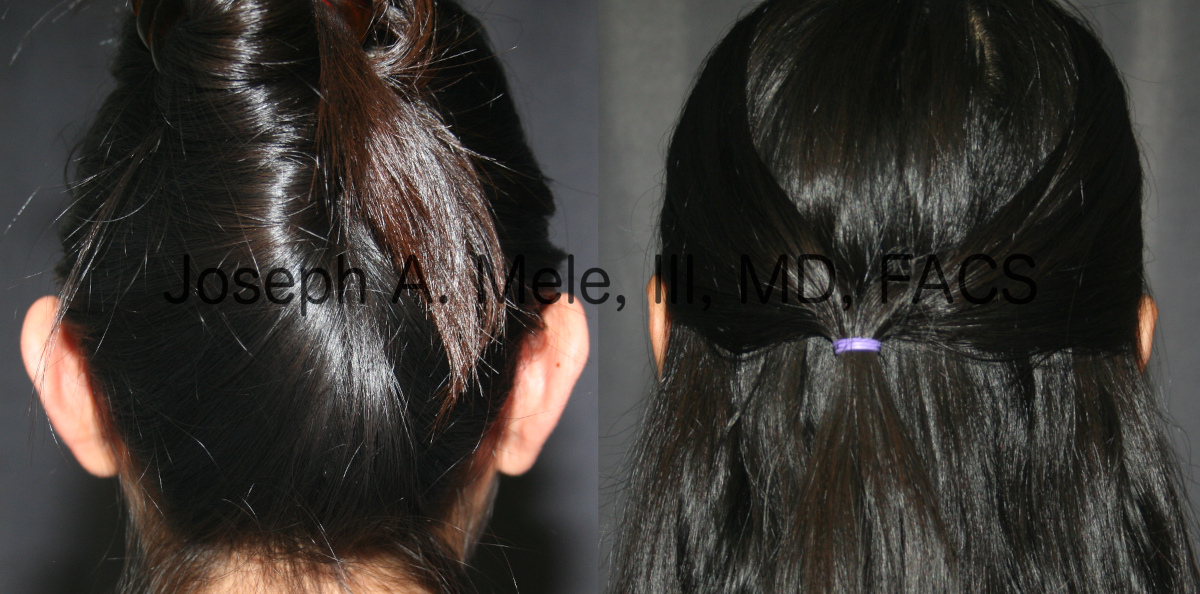
The absence of the normal ear folds causes the tops of the ears to protrude. By surgically creating the missing folds, Otoplasty tucks the ears back.
The most common ear “deformity” is prominent ears. When the ears stick out, they are often the target of ridicule and an area of concern for the patient. There are three anatomical changes that cause ear prominence. Today, we discussed these and Otoplasty, the operation Plastic Surgeons use to improve the ear’s aesthetics.
Incomplete Antihelical Fold and Superior Crus
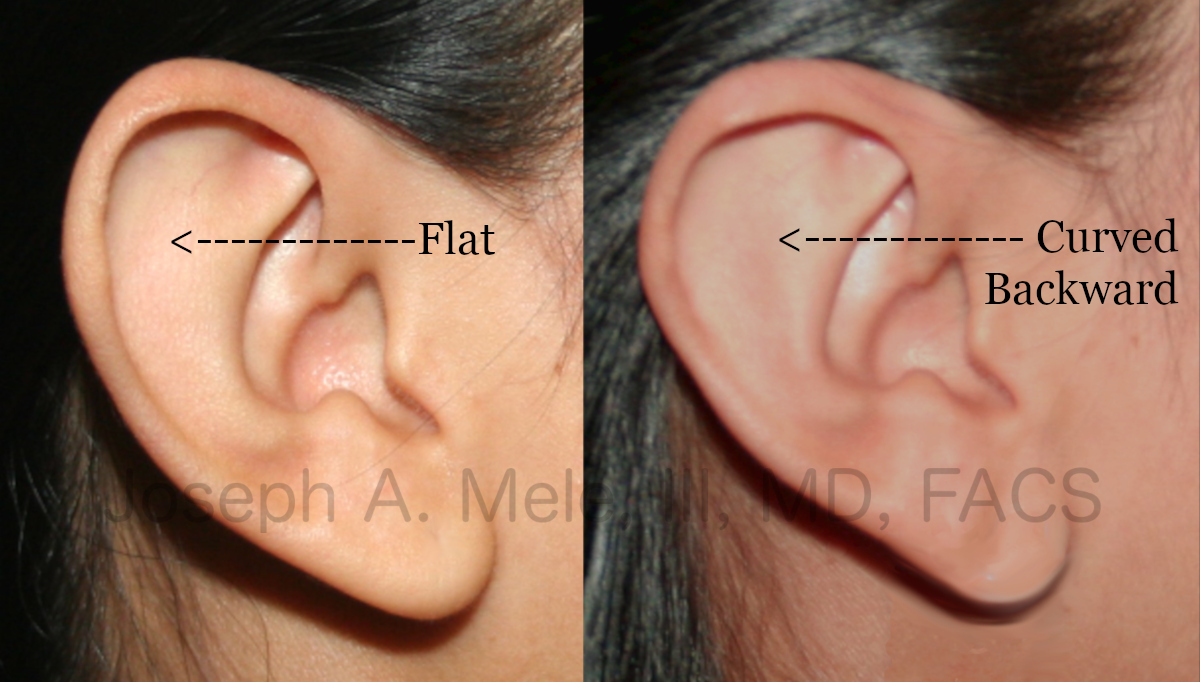
The absence of normal ear folds, in this case the superior crus and upper antihelical fold, causes the ear to stick out. Otoplasty was used to create the normal folds and bring the ears back against the head.
The most common cause of a prominent ear is an incomplete fold of the upper ear. This causes the top of the ear to stick out disproportionately. Correction involves completing the folds to bring the ears closer to the head. The before ear (left) is pointing toward you, while the, after ear (right) is flat against the head. The change is hard to see from the side; however, you can see the dramatic difference Otoplasty makes by looking at her before and after photos shown at the beginning of this post.
Enlarged and Anteriorly Rotated Concha
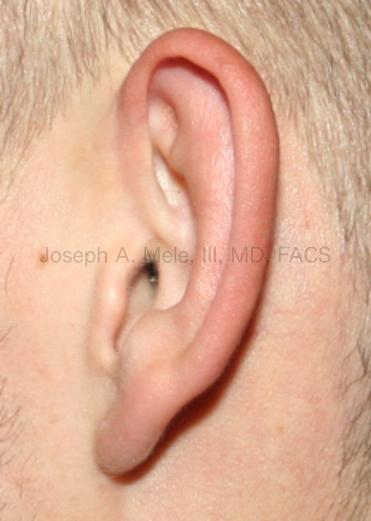
This patient has normal ear folds; however, the concha is rotated forward causing his ears to stick straight out.
Other causes of prominent ears are a large and/or anteriorly rotated concha – the central part of the ear that guides sound into the external auditory canal (the ear hole). Treatment may include reducing the conchal cartilage or rotating the concha backward closer to the skull.
Otoplasty for the patient above required a reduction of the concha and rotating the entire ear back. The ear folds are normal and do not require modification.
Otoplasties Come In Many Styles
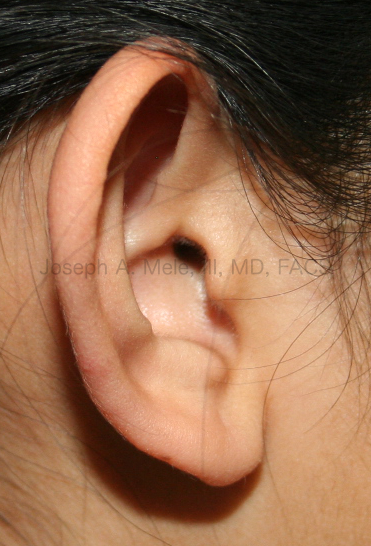
This patient has a combination of incomplete folds and a large anteriorly rotated concha, the part that catches sound. With Otoplasty, the folds were created and the concha was reduced and rotated backward.
For some patients, a combination of surgical maneuvers is necessary to achieve the best aesthetic results. The patient above, has both an anteriorly rotated concha and an incomplete antihelical fold. A Combination Otoplasty was used to create normal ear folds and rotate the concha back, creating the results below.
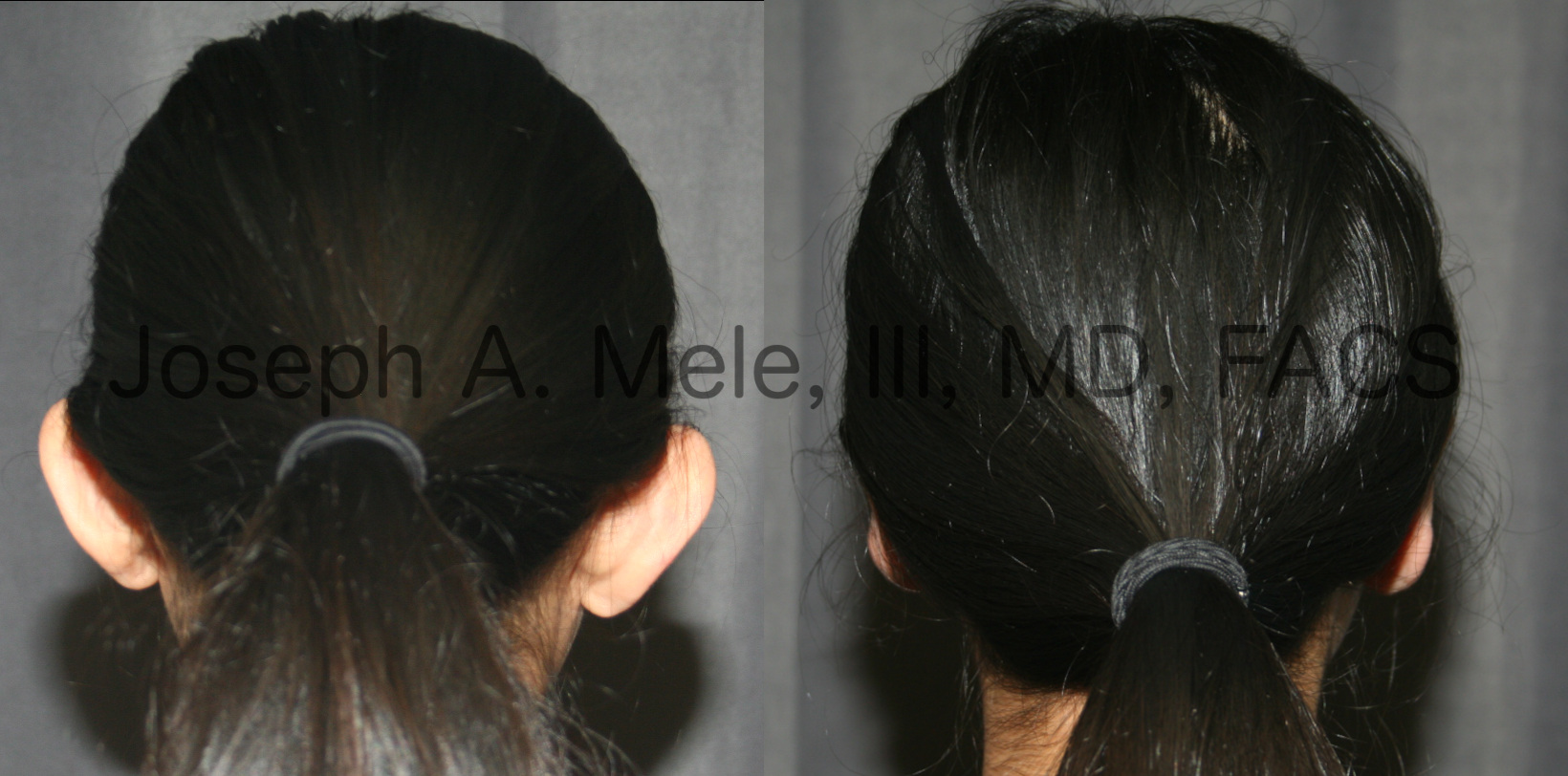
The absence of the normal ear folds can cause the ears to stick out. The top is usually more prominent. A combination Otoplasty was used to tuck her ears back.
It is important to adapt Otoplasty Surgery to the specific problems of each individual patient. This is why seeing an experienced, board certified plastic surgeon is so important. It is also important to mention that if the prominent ears do not bother the patient, they do not need to be fixed.
Other Ear Deformities
Other common ear “deformities” are cupped ears or Stahls ears. A cupped ear is contracted at the top, causing the top of the ear to fold over. The condition is also called lop ear.
Stahls ears have an additional fold that gives the appearance of pointed elf ears. This is also known as a Spock ear deformity, after the Star Trek character.
More rare ear deformities are microtia and anotia. These are incomplete development, or complete absence of the external ear, respectively. Both are associated with decreased or absent hearing. A full work up is needed prior to repair. Complete ear reconstruction is one of the most complicated cosmetic ear surgeries and needs to be performed by an experienced surgeon, often at a children’s hospital.
Otoplasty Consultations
If you are considering Cosmetic Ear Surgery call (925) 943-6353. I can review your concerns and explain the options available for you. Each ear is different, so an in-office consultation is the best way to develop an optimal treatment plan. My Walnut Creek Plastic Surgery Office is located in the San Francisco East Bay Area and we are prepared for all your Otoplasty needs.
Previous Post Next Post